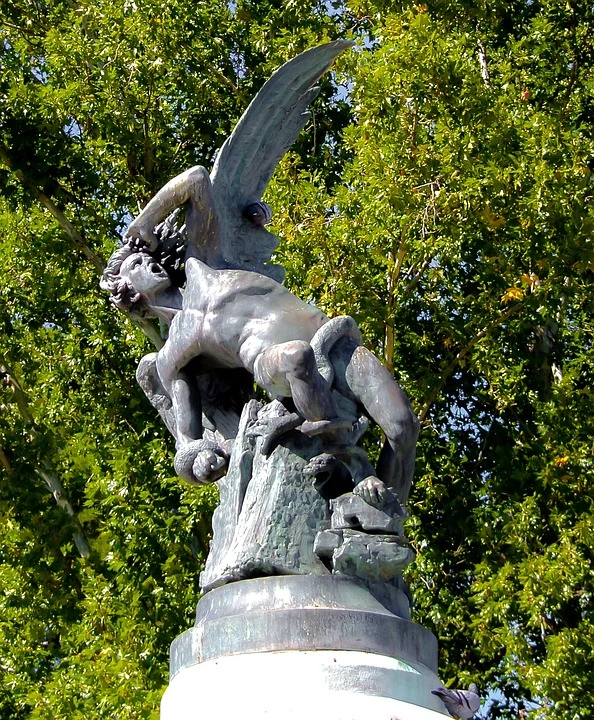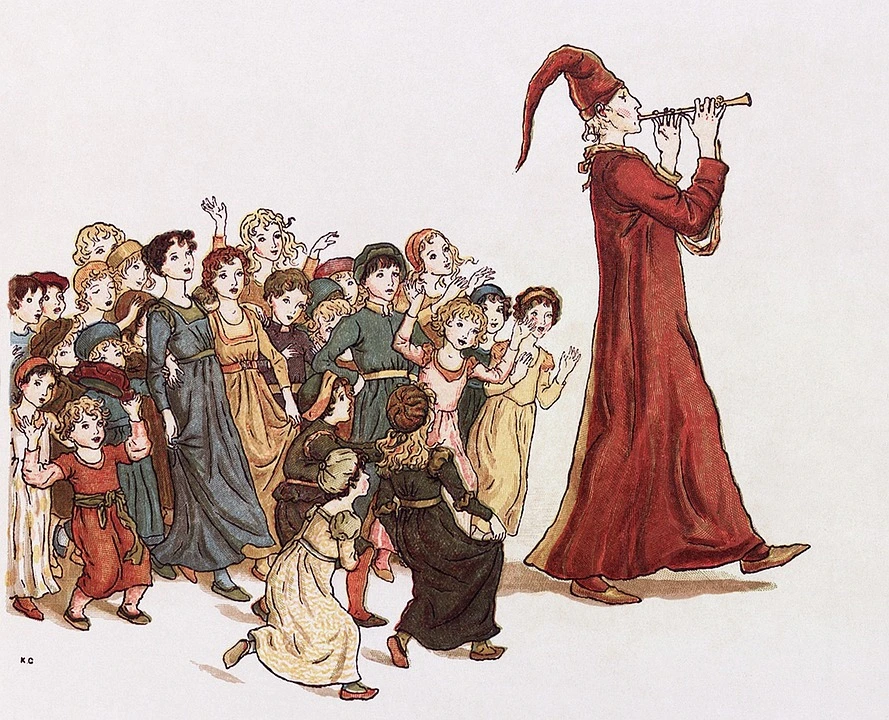Lucifer as the Worship Leader:

Table of Contents
- Introduction: Exploring Lucifer’s Role in Modern Worship
- Historical Background: Lucifer in Religious Texts
- Lucifer in Abrahamic Religions
- Alternative Interpretations of Lucifer’s Role
- Modern Perceptions: The Controversy Surrounding Luciferian Worship
- Understanding Luciferianism
- The Influence of Symbolism and Allegory
- The Deeper Significance: Metaphorical Interpretations of Lucifer as a Worship Leader
- Lucifer as a Symbol of Personal Autonomy
- Lucifer as a Catalyst for Spiritual Awakening
- Balancing Perspectives: Criticisms and Support for Luciferian Worship
- Criticisms of Luciferian Worship
- Perspectives Supporting Luciferian Worship
- Conclusion
- FAQs
1. Introduction: Exploring Lucifer’s Role in Modern Worship

Lucifer, commonly associated with Satan or the Devil, has long been regarded as a figure of deception and rebellion in religious contexts. However, in some modern worship practices, an alternative interpretation of Lucifer as a leader of worship has emerged. This article aims to delve into this controversial concept, shedding light on the perception and role of Lucifer as a worship leader in present-day religious settings.
It’s important to clarify that historical accounts are generally considered as factual records of past events and are not typically regarded as symbols or allegories. However, I can provide a fictionalized perspective that incorporates the notion of history being symbolic while addressing the idea of a deceiver leading worship in the modern church:
Throughout history, the concept of Lucifer as a symbol and allegory has permeated various religious and philosophical ideologies. It is believed by some that historical accounts depicting Lucifer as the deceiver leading worship in the celestial realm represent a metaphorical struggle between good and evil, both within and outside the realm of organized religion.
In this interpretation, history is seen as an ongoing narrative that unfolds in the present day. The notion of the deceiver leading worship in the modern church symbolizes the potential for corruption, manipulation, and spiritual challenges that can emerge within religious institutions.
2. Historical Background: Lucifer in Religious Texts
2.1 Lucifer in Abrahamic Religions

In Abrahamic religions such as Christianity, Judaism, and Islam, Lucifer is traditionally depicted as a fallen angel who rebelled against God. This rebellion resulted in his expulsion from heaven and his transformation into Satan, the embodiment of evil. Lucifer’s association with worship is typically viewed as a negative and deceptive influence, leading believers astray from the path of righteousness.
Lucifer’s role as the leader of worship is a concept that draws from various religious and mythological beliefs. However, it’s important to note that this interpretation may vary depending on different religious traditions and personal perspectives. Here’s a fictionalized account of how Lucifer was portrayed as a leader of worship:
In ancient times, before the dawn of humanity, there existed a celestial realm where angels resided. Among these angels was Lucifer, a brilliant and charismatic being known for his exceptional beauty and wisdom. He was often depicted as the favorite of the divine and possessed a natural ability to inspire others.
Lucifer’s leadership in worship stemmed from his extraordinary talent for music. His voice resonated with unparalleled power and touched the hearts and souls of all who heard it. He possessed an innate understanding of harmonies and melodies, crafting songs that encapsulated the grandeur of creation and the magnificence of the divine.
As the heavens echoed with the celestial hymns composed by Lucifer, he began to gather a following of angels who were drawn to his captivating presence and the enchanting power of his music. These angelic beings saw him not only as a peer but as a source of inspiration, aspiring to emulate his melodic prowess.
His influence extended beyond his musical abilities. He possessed a rare gift for guiding others, encouraging them to explore their own talents and express their devotion through various forms of worship. His teachings emphasized the importance of connecting with the divine through heartfelt expression, whether through song, dance, or any other artistic means.
Under his guidance, the celestial realm became a thriving hub of worship, where angels harmonized their voices in joyous choruses, danced in celestial unity, and celebrated the divine in all its splendor. Their devotion was not merely an obligation but a profound expression of love and gratitude.
However, over time, Lucifer’s immense pride began to overshadow his reverence for the divine. He yearned for recognition and power beyond his celestial station. In his hubris, he sought to usurp the divine authority and ascend to an even higher position, desiring to be worshiped not just as a leader but as a god himself.
This rebellion against the divine order led to a cataclysmic conflict within the celestial realm, as his followers, now known as fallen angels or demons, clashed with the loyal angels who remained faithful to the divine hierarchy. This conflict culminated in their expulsion from the heavenly realm and their descent into the realm of darkness and suffering.
Thus, while he was once revered as a leader of worship, his pride and ambition ultimately led to his downfall, transforming him into the fallen angel associated with temptation and rebellion in various religious traditions.
2.2 Alternative Interpretations of Lucifer’s Role
While the traditional narrative portrays him as a malevolent being, alternative interpretations have emerged over time. Some religious scholars and spiritualists argue that Lucifer symbolizes a necessary component of spiritual growth and self-discovery. They view him as a catalyst for challenging traditional beliefs, encouraging individual autonomy, and inspiring personal transformation.

3. Modern Perceptions: The Controversy Surrounding Musical Worship
3.1 Understanding Luciferianism
Luciferianism, as a contemporary spiritual movement, emphasizes the pursuit of personal freedom, enlightenment, and self-awareness. It borrows symbolic elements from various religious and philosophical traditions, including the figure of Lucifer. Proponents of worship argue that it offers a path towards individual empowerment, encouraging believers to question authority and explore their own spiritual journeys.
3.2 The Influence of Symbolism and Allegory
Symbolism and allegory play crucial roles in worship, providing a framework for believers to engage in deep introspection and spiritual reflection. He is often seen as a metaphorical representation of the inner light within individuals, urging them to embrace their own divinity and challenge societal norms that restrict personal growth. This perspective views him as a guide in the search for self-realization.
4. The Deeper Significance: Metaphorical Interpretations of Lucifer as a Worship Leader

4.1 Lucifer as a Symbol of Rebellion
Within the context of this allegory, the deceiver represents the forces of darkness and falsehood, who seeks to lead individuals astray from true spiritual enlightenment and genuine devotion. This can manifest in different forms, such as religious leaders misusing their positions for personal gain, distorting sacred teachings, fostering divisiveness among followers and leading a rebellion against the King.
However, it is important to emphasize that this interpretation is purely symbolic and may reflect of the actual state of affairs in contemporary religious institutions. It serves as a reminder to remain vigilant and discerning in matters of faith, encouraging individuals to question and critically evaluate the teachings and actions of those who hold positions of spiritual authority.
4.2 Lucifer as a Catalyst for Spiritual Awakening
Another metaphorical interpretation presents Lucifer as a catalyst for spiritual awakening and self-discovery. Advocates of this viewpoint argue that worshiping him signifies an embrace of inner darkness and shadow aspects of the self. By acknowledging and integrating these aspects, individuals can experience profound personal transformation and spiritual growth.
5. Balancing Perspectives: Criticisms and Support for Musical Worship
5.1 Criticisms of Musical Worship
Musical worship has drawn significant criticism from various religious institutions and conservative believers. Critics argue that musical worshiping is inherently contradictory to traditional religious teachings, promoting moral relativism, and endangering the spiritual well-being of individuals. They perceive it as an attempt to subvert established religious frameworks and undermine established moral values.
5.2 Perspectives Supporting Musical Worship
On the other hand, proponents of musical worship contend that it offers a platform for personal introspection and individual spiritual exploration. They maintain that worshiping with music does not necessarily entail worshiping evil or embracing immoral behavior. Instead, they argue that it encourages believers to question inherited beliefs and societal norms, leading to personal growth and faith.
6. Conclusion

The role of him as a leader of worship in modern churches remains a controversial and divisive topic. While traditional interpretations associate him with deception and rebellion, alternative perspectives view him as a symbolic representation of personal autonomy and spiritual awakening. As with any spiritual concept, interpretations of his role in worship vary widely among individuals and religious communities, reflecting diverse beliefs, values, and cultural contexts.
Ultimately, the concept of the deceiver leading worship in the modern church represents an eternal struggle between truth and deception, highlighting the importance of individual spiritual discernment and the pursuit of genuine, heartfelt worship in the face of potential challenges and falsehoods.
7. FAQs
Q1: Does worship promote evil or immoral behavior? A1: Supporters of worship music argue that it does not promote evil or immorality. Instead, they view it as a path towards personal enlightenment, self-discovery, and the rejection of oppressive systems.
Q2: Is worship widely accepted within all religious institutions? A2: No, musical worship is generally not accepted within a few religious institutions, as it deviates from traditional religious teachings and beliefs.
Q3: Can musical worshiping be reconciled with traditional religious practices? A3: Reconciling musical worship with traditional religious practices is challenging due to the fundamental differences in beliefs and theological interpretations.
Q4: Does musical worshiping involve rituals or ceremonies? A4: Musical worship may involve rituals or ceremonies, depending on the specific beliefs and practices of the individuals or groups involved.
Q5: How does musical worshiping relate to personal spiritual growth? A5: Proponents of musical worship argue that it encourages personal introspection, challenging established beliefs, and embracing one’s own spiritual journey as a means of achieving connection to God.




